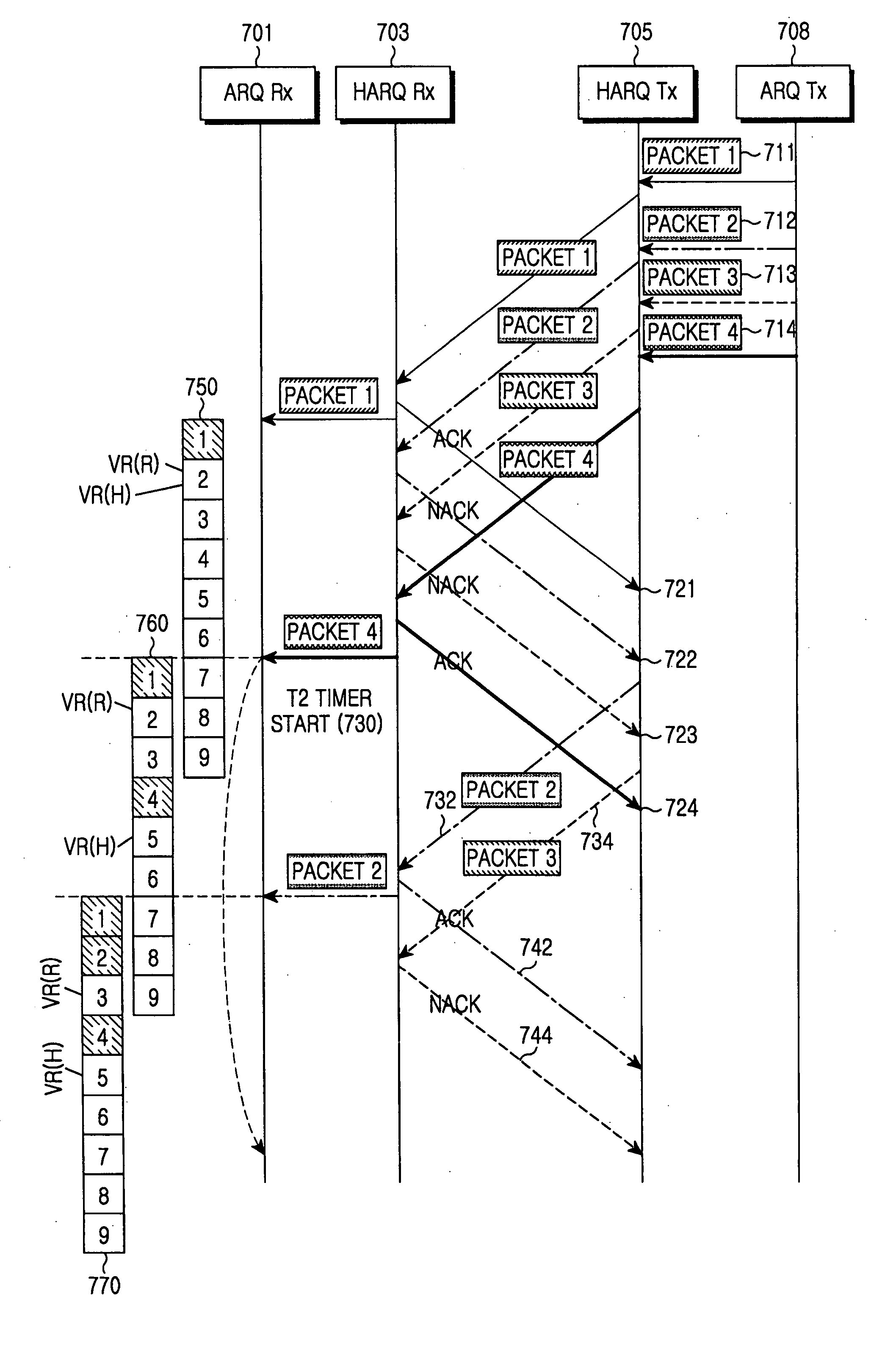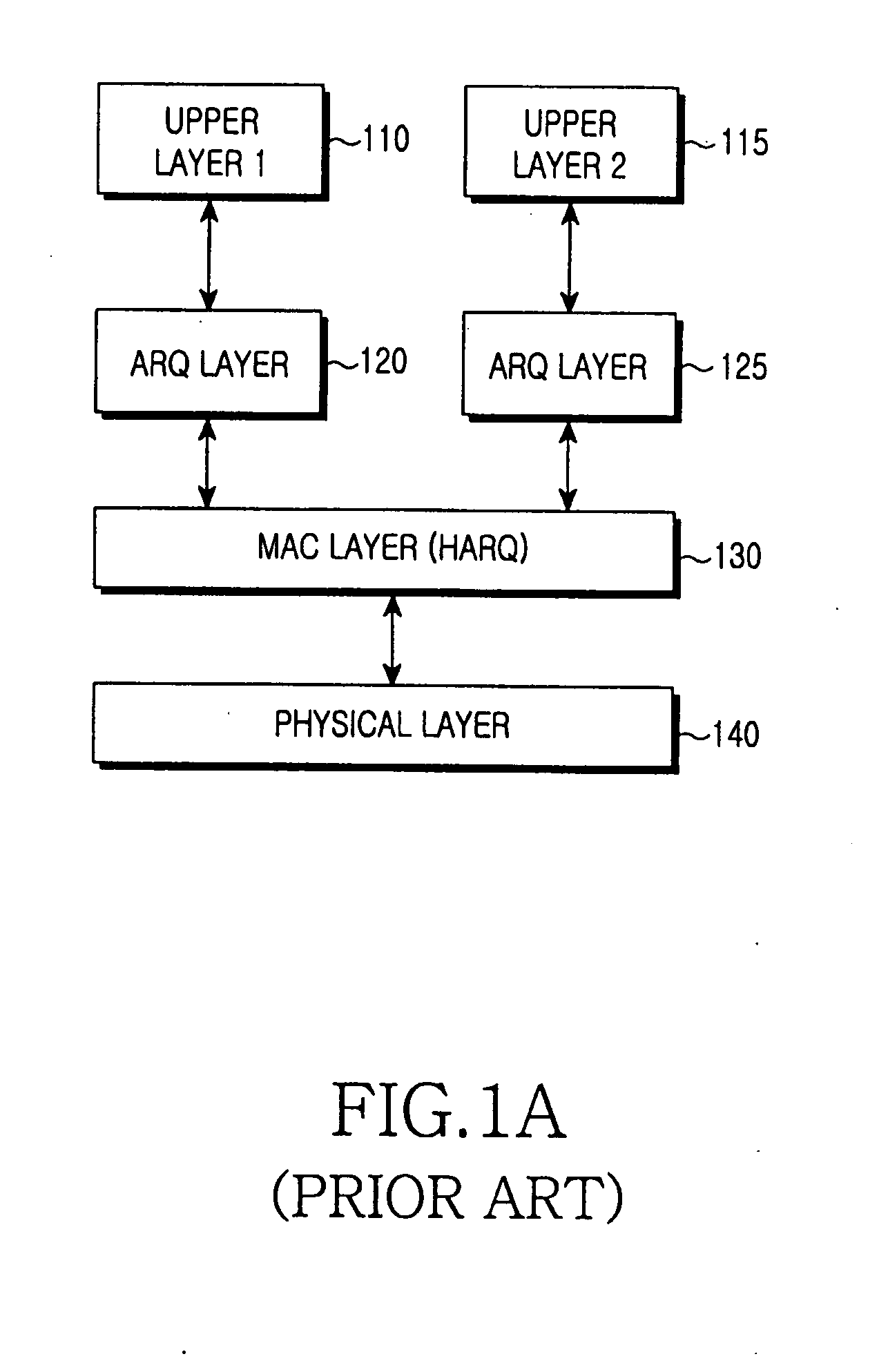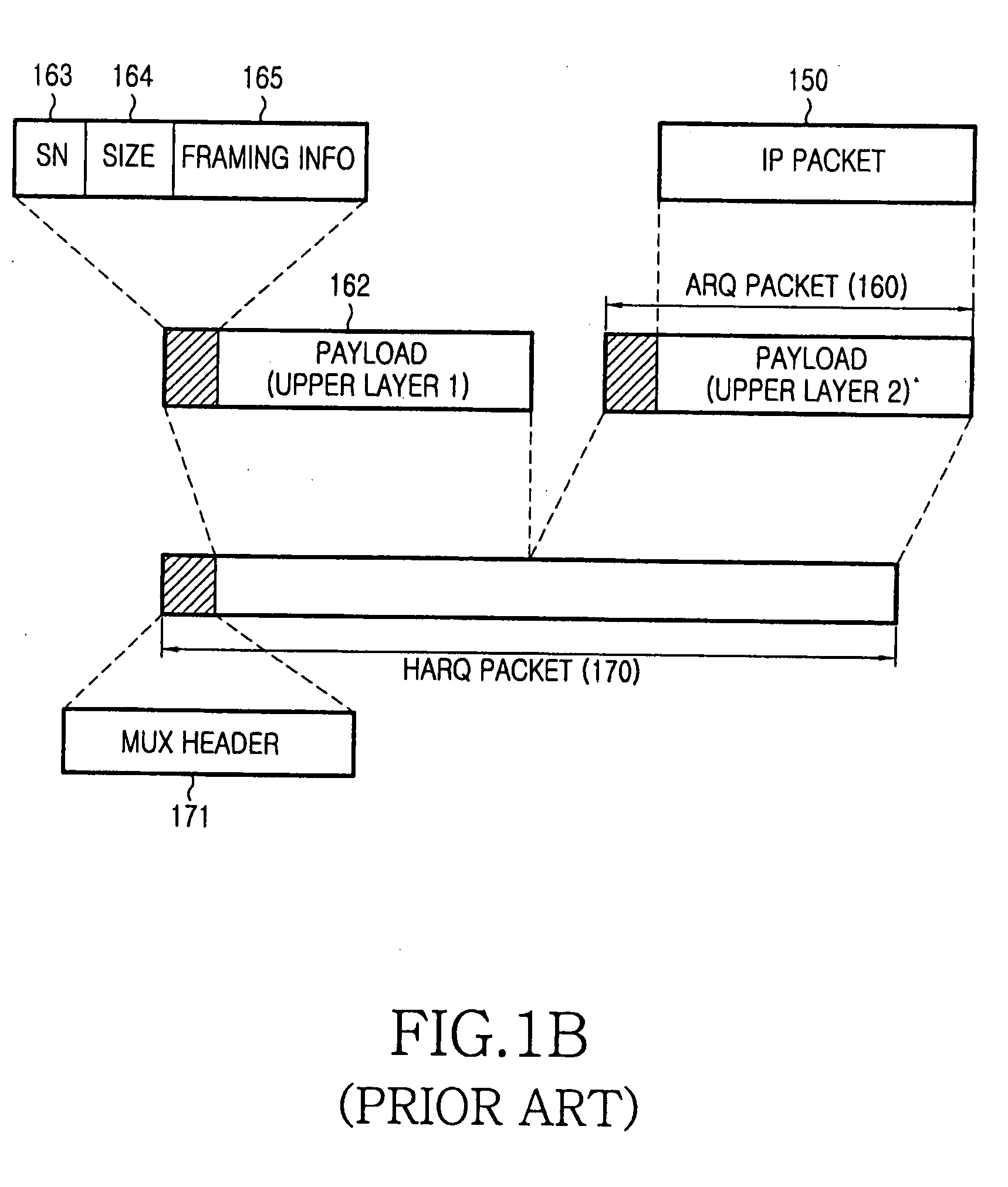Retransmission apparatus and method for high-speed data processing
a retransmission apparatus and high-speed data technology, applied in the field of mobile communication systems, can solve the problems of harq processor failing to detect errors, inefficient to achieve a very low block error rate (bler) only with harq operation, and hard to obtain a sufficiently low packet error ratio
- Summary
- Abstract
- Description
- Claims
- Application Information
AI Technical Summary
Benefits of technology
Problems solved by technology
Method used
Image
Examples
first embodiment
[0104]FIG. 8 illustrates an example of driving T2 timers in units of the bundle of all consecutive missing ARQ packets, and FIGS. 9A, 9B and 9C illustrate processes for the case where the T2 timer is driven in units of ARQ packets according to FIG. 8.
[0105]FIG. 8 illustrates a method of driving multiple T2 timers according to the first embodiment of the present invention.
[0106] Referring to FIG. 8, as can be understood from a reception buffer 810 of an ARQ Rx 801, the ARQ Rx 801 has failed to normally receive an ARQ packet composed of packets #3 and #4, an ARQ packet composed of packets #7, #8 and #9, and an ARQ packet composed of a packet #12. At this time, VR(R) has a value of a sequence number 3.
[0107] The ARQ Rx 801 drives the T2 timer separately for packets #3 and #4; packets #7, #8 and #9; and packet #12. For example, the ARQ Rx 801 drives a T2(3) timer for the missing packets #3 and #4 upon receipt of a packet #5, i.e. at step 830. The ARQ Rx 801 drives a T2(7) timer for t...
second embodiment
[0118] In the second embodiment, a description will be made of an ACK transmission method of driving one timer in units of consecutive missing packets.
[0119]FIG. 10 illustrates a method of sequentially driving one T2 timer in units of the bundle of consecutive missing ARQ packets according to the second embodiment of the present invention.
[0120] Referring to FIG. 10, as can be understood from a reception buffer 1010 of an ARQ Rx 1001, the ARQ Rx 1001 has failed to normally receive an ARQ packet composed of packets #3 and #4, an ARQ packet composed of packets #7, #8 and #9, and an ARQ packet composed of a packet #12. At this time, VR(R) has a value of a sequence number 3.
[0121] In step 1030, the ARQ Rx 1001 drives only a T2(3) timer for the packet #3 corresponding to VR(R) and its succeeding missing packet #4. If the ARQ Rx 1001 has failed to receive the packets #3 and #4 until the T2(3) timer expires, the ARQ Rx 1001 sends in step 1040 an ARQ ACK (2) including an ACK sequence num...
third embodiment
[0128] In the mobile communication system, the amount of received data varies according to conditions of the wireless environment, a QoS level of the corresponding service, the amount of wireless resources depending on the number of accessed terminals (or users), and the like. If the transmitting ARQ layer does not have sufficient transmission data, the amount of received data of the receiving ARQ layer decreases regardless of the factors mentioned above. Therefore, it is inefficient to send an ACK simply based on the amount of received data. Accordingly, in the third embodiment, a description will be made of a method for sending an ACK depending on the amount of received data.
[0129]FIG. 12 illustrates a process of sending an ACK with the use of a counter according to the third embodiment of the present invention.
[0130] Referring to FIG. 12, an ARQ Rx receives a packet in step 1200, and determines in step 1202 if VR(R) is updated according to the received packet. VR(R) is a variab...
PUM
 Login to View More
Login to View More Abstract
Description
Claims
Application Information
 Login to View More
Login to View More - R&D
- Intellectual Property
- Life Sciences
- Materials
- Tech Scout
- Unparalleled Data Quality
- Higher Quality Content
- 60% Fewer Hallucinations
Browse by: Latest US Patents, China's latest patents, Technical Efficacy Thesaurus, Application Domain, Technology Topic, Popular Technical Reports.
© 2025 PatSnap. All rights reserved.Legal|Privacy policy|Modern Slavery Act Transparency Statement|Sitemap|About US| Contact US: help@patsnap.com



